It was a busy afternoon for Marcus, a freelance photographer eager to expand his client base. He had just launched his first Instagram ad campaign promoting his services. A week later, he checked his account and found a mix of numbers: impressions, clicks, engagement rates, and conversions. Overwhelmed, he wondered: “What do these numbers even mean, and which ones should I care about?”
If you’ve ever felt like Marcus, this guide is for you. Let’s unravel the mystery of Instagram ad metrics, explore their significance, and share untold tips to ensure your campaigns deliver maximum impact.
Why Metrics Matter
Metrics are the pulse of your Instagram ad campaigns. They tell you what’s working, what isn’t, and where to focus your efforts. Without understanding them, you’re essentially flying blind. But with the right insights, you can fine-tune your ads to connect with your audience and achieve your goals.
Key Instagram Ad Metrics to Track
1. Impressions and Reach
- Impressions: The total number of times your ad is displayed.
- Reach: The number of unique users who see your ad.
Marcus’s first ad had 10,000 impressions but a reach of only 3,000. This told him that his audience was seeing his ad multiple times, which could be beneficial for brand recall but might also signal ad fatigue if overdone.
Pro Tip:
If your reach is low but impressions are high, consider refreshing your creative assets to maintain interest.
2. Click-Through Rate (CTR)
CTR measures the percentage of people who clicked on your ad after seeing it. For example, if Marcus’s ad was shown to 1,000 people and 50 clicked, his CTR would be 5%.
CTR is a crucial indicator of how engaging your ad’s visuals, copy, and call-to-action (CTA) are.
Pro Tip:
Use Natural Language Processing (NLP) tools to analyze audience sentiment and refine your ad copy. For instance, words like “discover” and “unveil” often generate curiosity and clicks.
3. Engagement Rate
This metric includes likes, comments, saves, and shares. It shows how your audience interacts with your ad.
Marcus noticed that his carousel ad had more saves and shares compared to a single-image ad. This insight helped him realize that his audience preferred detailed, multi-image posts.
Pro Tip:
Use engaging captions and include CTAs like “Save this for later” or “Tag a friend who needs this!” to boost engagement.
4. Conversion Rate
The ultimate goal for many campaigns is conversion, whether it’s signing up for a newsletter, purchasing a product, or booking a service. Conversion rate tracks the percentage of users who complete the desired action after clicking your ad.
Marcus’s landing page had a high bounce rate, which affected his conversions. By optimizing the page with a faster load time and clearer CTAs, he improved his results.
Pro Tip:
Align your ad’s message with the landing page. If your ad promises “5 Quick Tips for Stunning Portraits,” make sure the landing page delivers just that.
5. Cost Metrics
- Cost Per Click (CPC): How much you’re paying for each click.
- Cost Per Mille (CPM): The cost per 1,000 impressions.
- Cost Per Acquisition (CPA): The cost to acquire one customer.
While running his campaign, Marcus discovered that his CPC was high compared to industry benchmarks. By narrowing his audience and using more targeted keywords, he reduced his CPC by 20%.
Pro Tip:
Set daily or campaign-wide spending limits to avoid overspending. Track cost metrics regularly and adjust your bids accordingly.
Advanced Tips: Going Beyond Basics
1. Use A/B Testing
Experiment with different ad formats, visuals, and CTAs. Marcus’s A/B test revealed that ads featuring client testimonials outperformed generic promotional content.
2. Monitor Ad Frequency
If your frequency metric (the average number of times an individual sees your ad) is too high, your audience may experience ad fatigue. Rotate creatives or expand your targeting to avoid this.
3. Leverage Audience Insights
Instagram’s analytics provide demographic and behavioral data. Marcus discovered that his audience was mostly active between 7 PM and 9 PM. Scheduling his ads during this window significantly improved engagement.
4. Automate Metrics Tracking with NLP Tools
Platforms using NLP can analyze trends, flag anomalies, and predict performance. Tools like these save time and provide actionable insights.
Marcus’s Success Story
After diving into his ad metrics, Marcus made several changes:
- He optimized his CTR by rewriting his ad copy to include action-oriented language.
- He improved his conversion rate by simplifying his landing page.
- He reduced his CPC by narrowing his target audience.
By the end of his second campaign, Marcus had not only doubled his client inquiries but also felt confident in managing future ads.
Conclusion
Tracking Instagram ad metrics isn’t just about crunching numbers—it’s about understanding your audience and continuously optimizing your campaigns. Whether it’s analyzing CTR, refining engagement strategies, or using NLP for better exposure, every tweak brings you closer to success.
So, the next time you’re managing an Instagram ad campaign, think like Marcus. Dive into the metrics, apply these untold tips, and watch your results soar. Ready to transform your ads? Start tracking today!

